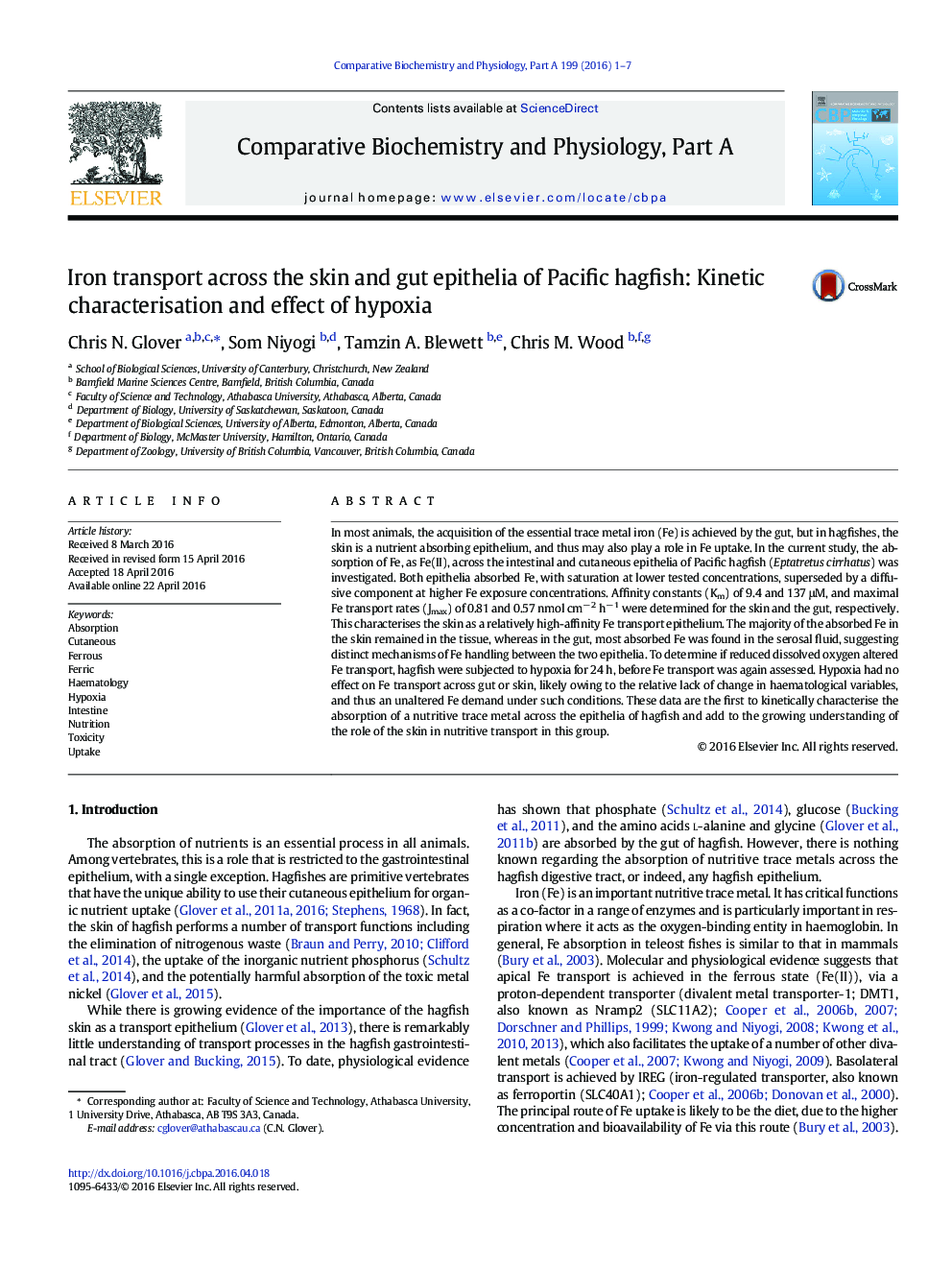| Article ID | Journal | Published Year | Pages | File Type |
|---|---|---|---|---|
| 1971796 | Comparative Biochemistry and Physiology Part A: Molecular & Integrative Physiology | 2016 | 7 Pages |
In most animals, the acquisition of the essential trace metal iron (Fe) is achieved by the gut, but in hagfishes, the skin is a nutrient absorbing epithelium, and thus may also play a role in Fe uptake. In the current study, the absorption of Fe, as Fe(II), across the intestinal and cutaneous epithelia of Pacific hagfish (Eptatretus cirrhatus) was investigated. Both epithelia absorbed Fe, with saturation at lower tested concentrations, superseded by a diffusive component at higher Fe exposure concentrations. Affinity constants (Km) of 9.4 and 137 μM, and maximal Fe transport rates (Jmax) of 0.81 and 0.57 nmol cm− 2 h− 1 were determined for the skin and the gut, respectively. This characterises the skin as a relatively high-affinity Fe transport epithelium. The majority of the absorbed Fe in the skin remained in the tissue, whereas in the gut, most absorbed Fe was found in the serosal fluid, suggesting distinct mechanisms of Fe handling between the two epithelia. To determine if reduced dissolved oxygen altered Fe transport, hagfish were subjected to hypoxia for 24 h, before Fe transport was again assessed. Hypoxia had no effect on Fe transport across gut or skin, likely owing to the relative lack of change in haematological variables, and thus an unaltered Fe demand under such conditions. These data are the first to kinetically characterise the absorption of a nutritive trace metal across the epithelia of hagfish and add to the growing understanding of the role of the skin in nutritive transport in this group.
